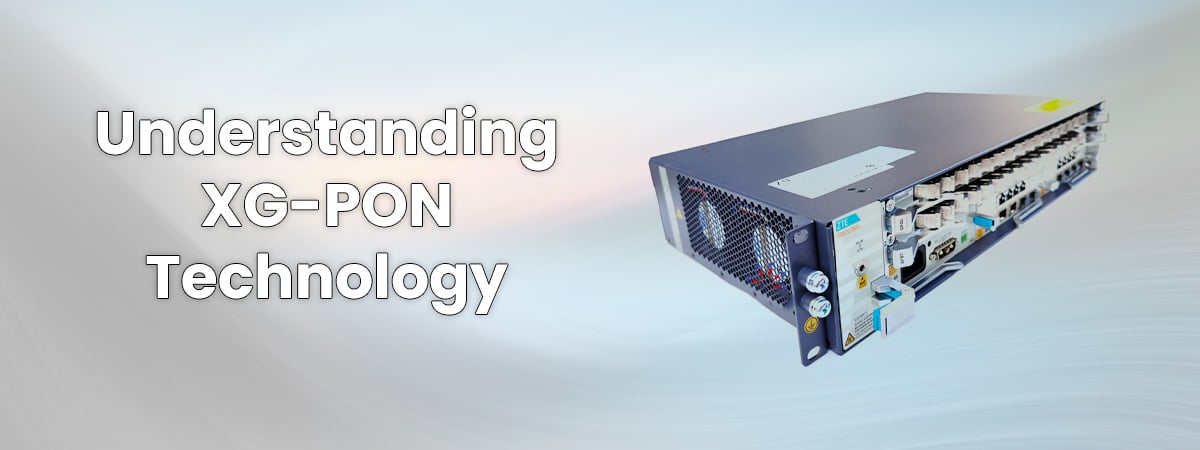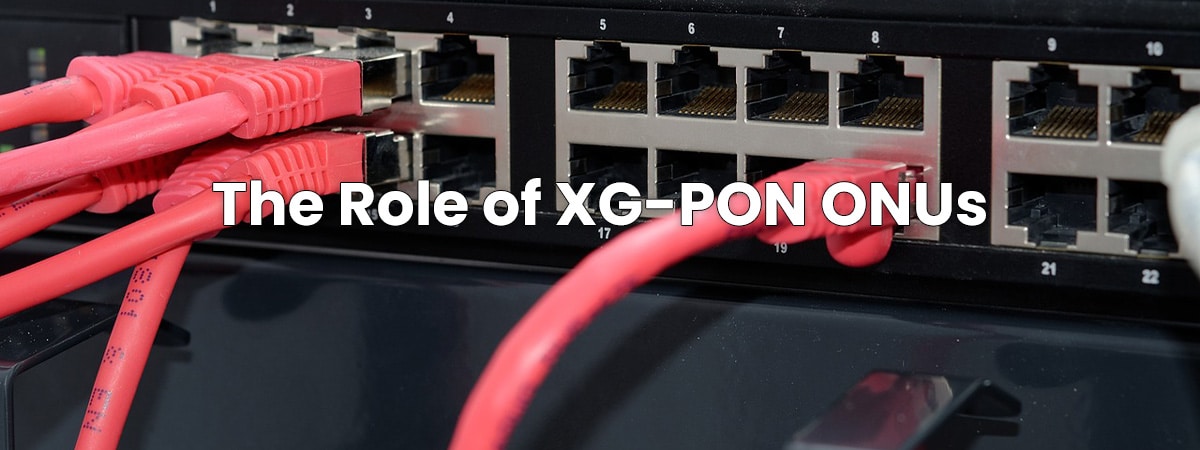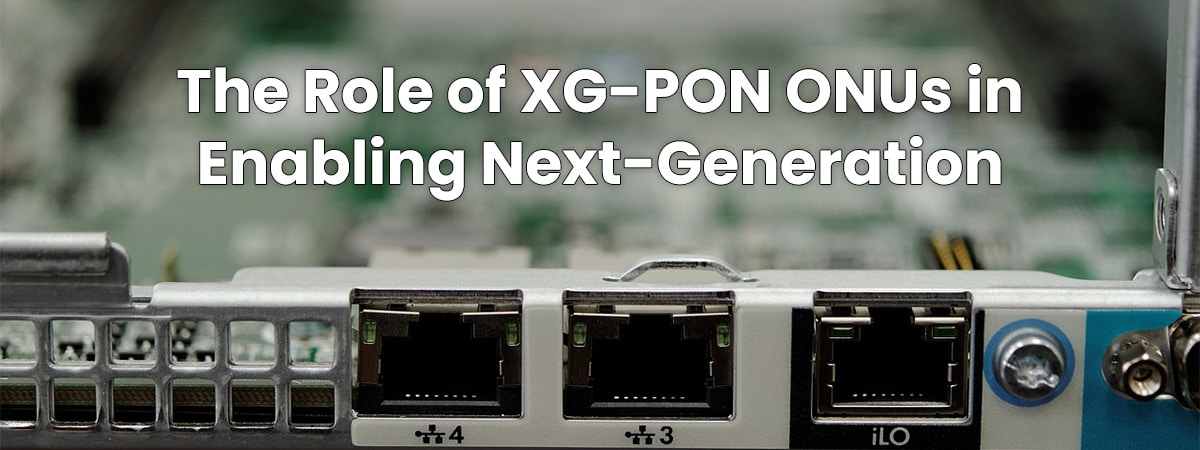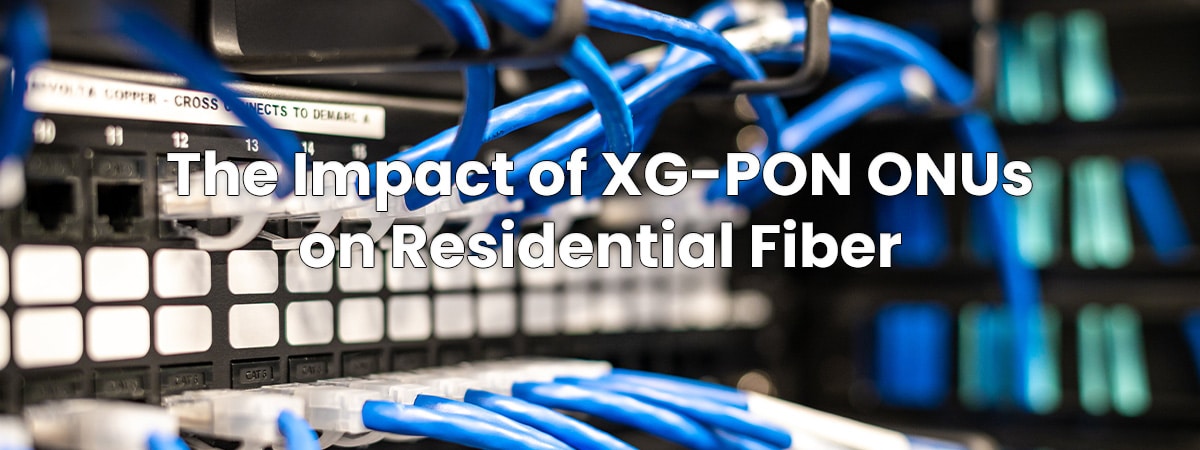In the ever-evolving landscape of telecommunications, the demand for faster, more reliable, and future-proof networks continues to grow. To meet these demands, the deployment of advanced technologies like XG-PON (10-Gigabit Passive Optical Network) has become crucial. Within this context, Optical Network Units (ONUs) equipped with XG-PON technology play a pivotal role in enabling next-generation services. In this article, we will delve into the multifaceted role of XG-PON ONUs and how they are driving the transition to a new era of connectivity.
Understanding XG-PON Technology

XG-PON is the latest evolution of PON technology, designed to deliver symmetrical speeds of up to 10 gigabits per second (Gbps) both upstream and downstream. This remarkable bandwidth capacity positions XG-PON as a transformative technology capable of meeting the ever-increasing demands of modern communication and entertainment services.
The Role of XG-PON ONUs

XG-PON ONUs, or customer-premises equipment, serve as the interface between the service provider’s network and the end-user’s devices. Their role in enabling next-generation services is multifaceted and includes:
- Ultra-High-Speed Internet: XG-PON ONUs are designed to provide ultra-high-speed internet access to consumers and businesses. With symmetric speeds of up to 10 Gbps, they enable lightning-fast downloads, uploads, and lag-free online experiences. This is essential for bandwidth-hungry applications, such as 4K and 8K video streaming, virtual reality, and online gaming.
- Support for Multiple Services: XG-PON ONUs are versatile and capable of supporting a wide range of services simultaneously. This includes high-definition television (HDTV) and voice services, allowing service providers to offer bundled packages that cater to diverse consumer needs.
- Future-Proofing Networks: The scalability of XG-PON ONUs is a significant asset. As consumer demands evolve and new services emerge, service providers can easily upgrade their networks without major infrastructure overhauls. This future-proofs the network, ensuring it can adapt to changing technology trends.
- Business Connectivity: XG-PON ONUs are not limited to residential applications. They are equally valuable in the business sector, offering high-speed internet, reliable voice services, and seamless connectivity for enterprises. This supports mission-critical operations, cloud-based services, and data-intensive applications.
- Energy Efficiency: XG-PON ONUs are designed with energy efficiency in mind. They consume less power compared to older technologies, reducing operational costs for service providers and minimizing their environmental footprint.
The Impact on Next-Generation Services

XG-PON ONUs are instrumental in enabling a wide range of next-generation services:
- Smart Homes: With the increasing adoption of smart home devices and automation, XG-PON ONUs provide the necessary bandwidth and low latency for a seamless smart home experience. Users can control devices, stream 4K content, and monitor security cameras with ease.
- Telemedicine: Telemedicine and remote healthcare services depend on high-speed and reliable internet connections. XG-PON ONUs facilitate real-time video consultations, remote patient monitoring, and the transfer of medical data, enhancing healthcare accessibility.
- Education: The shift towards online education and e-learning platforms demands robust internet connections. XG-PON ONUs ensure that students and educators have access to high-quality video conferencing, virtual classrooms, and digital resources.
- Content Creation: Content creators and professionals rely on high-speed internet for video editing, graphic design, and other data-intensive tasks. XG-PON ONUs empower them with the bandwidth needed to work efficiently.
- IoT Integration: The Internet of Things (IoT) is expanding rapidly. XG-PON ONUs support the integration of IoT devices, allowing for smart cities, connected vehicles, and industrial automation.
Challenges and Considerations
While XG-PON ONUs bring numerous advantages, their deployment also comes with challenges. Upgrading existing networks to support XG-PON technology can be costly, and service providers need to carefully plan and invest in the necessary infrastructure. Additionally, ensuring network security and managing the complexities of multi-service delivery require careful consideration.
Conclusion
XG-PON ONUs are at the forefront of enabling next-generation services in the telecommunications industry. Their ability to deliver ultra-high-speed internet, support multiple services, future-proof networks, and enhance various sectors’ capabilities makes them a critical component of the digital revolution. As technology continues to advance and consumer expectations rise, XG-PON ONUs will continue to play a pivotal role in shaping the future of connectivity, opening doors to new possibilities and innovations in the world of telecommunications.

